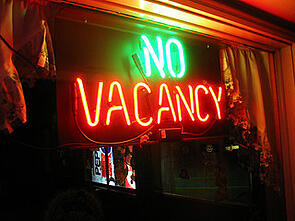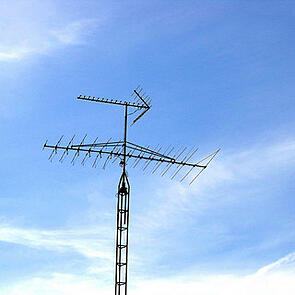 At this point, offering WiFi at a hotel or other hospitality WiFi is becoming more of a necessity than an option. As increasing numbers of guests all haul their tablets and smartphones around, they expect top notch hotel WiFi service. Beyond attracting more guests to your facilities, there are also numerous options for further monetizing WiFi once you've got it.
At this point, offering WiFi at a hotel or other hospitality WiFi is becoming more of a necessity than an option. As increasing numbers of guests all haul their tablets and smartphones around, they expect top notch hotel WiFi service. Beyond attracting more guests to your facilities, there are also numerous options for further monetizing WiFi once you've got it.
So, how should a hotel look at implementing WiFi? Let's take a look at a few hardware options on the market today, and how they can be deployed in a hotel environment.

Four Top Hotel WiFi Systems That Are Great ...
1 – Central Controller
The most typical network design of years past – and still commonly used – is one where a central server or a dedicated piece of hardware runs as the “controller” for the wireless network. This allows very low-cost, WiFi access points to be used, but the centralization itself can create barriers to expansion, especially on a large piece of land.
For smaller hotels, or those with existing equipment, a WiFi system can be put “on top” of it with relatively little effort, making this a cost-efficient option.
2 – ActivReach
ActivReach is proprietary ADTRAN technology specifically designed for establishments with a lot of existing copper wiring, which can be a barrier to new network implementation. New cable drops can be prohibitively expensive, especially if the existing wires would need to be removed. Yet, there are hard limitations on how far data can transmit on copper wires. Past about 100m, there's too much 'interference' for the data to transmit reliably.
However, by using encoder/decoder boxes at either end of the connection, ActivReach can expand the effective range of copper wiring by a factor of nearly five. It can even send high-speed Internet connections through standard telephone wiring, without the need for CAT-5 or better cables. This can make controller-based solutions more practical in a highrise, for example.
However, if you're not in this situation of having "too much copper," or if limited by wiring distance, there's little other reason to buy into ActivReach.
3 – Directional Antennas 
In a lot of businesses, a single access point with an “omnidirectional” antenna is all that's necessary. It creates a “bubble” of coverage, and if that bubble covers your facility, everything works.
However, hotels tend to face implementation problems for WiFi because of their construction: The thicker walls needed to keep the guest experience pleasant tend to also block WiFi signals, especially if there's concrete in between each room.
In many cases, a hotel will have to supplement its regular WiFi access points with powered directional antennas, to “push through” the thicker walls and guarantee service. For many hotels with problems achieving universal accessibility for WiFi, this is usually what fixes it.
4 – BlueSocket
The newest tech on the market for hotels, and one that's making waves, is called Adtran BlueSocket. This standard for WiFi networking seeks to make wholly virtualized, controller-less networks where expansion is as simple as plugging in a new access point.
Since the network is controller-less, it reduces the need for on-site hardware or extra wiring back to a hardware controller or dedicated server. The network software “lives” on the network hardware itself, as well as providing all routing and controlling needs.
BlueSocket APs are a slightly more expensive to invest in than standard WiFi access points, but they are totally self-contained. For a simple implementation, a single BlueSocket AP may be literally all you need, aside from having a computer on-site to handle the initial installation. Then, when your need for coverage expands, it's literally a five-minute process -if that- to install another access point, which combines seamlessly with the other(s).
To learn more about BlueSocket, ActivReach, or any of the newest methods for ensuring great WiFi, just contact Hummingbird Networks!
photo credit: taberandrew via photopin cc










